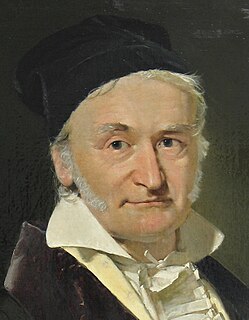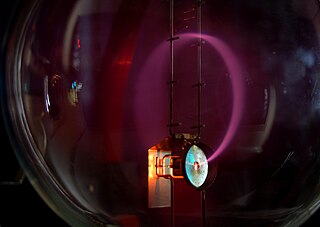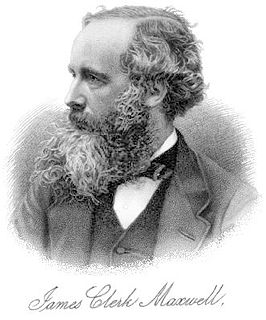In engineering and science, dimensional analysis is the analysis of the relationships between different physical quantities by identifying their base quantities and units of measure and tracking these dimensions as calculations or comparisons are performed. The conversion of units from one dimensional unit to another is often easier within the metric or SI system than in others, due to the regular 10-base in all units. Dimensional analysis, or more specifically the factor-label method, also known as the unit-factor method, is a widely used technique for such conversions using the rules of algebra.

Numerical analysis is the study of algorithms that use numerical approximation for the problems of mathematical analysis. Numerical analysis naturally finds application in all fields of engineering and the physical sciences, but in the 21st century also the life sciences, social sciences, medicine, business and even the arts have adopted elements of scientific computations. The growth in computing power has revolutionized the use of realistic mathematical models in science and engineering, and subtle numerical analysis is required to implement these detailed models of the world. For example, ordinary differential equations appear in celestial mechanics ; numerical linear algebra is important for data analysis; stochastic differential equations and Markov chains are essential in simulating living cells for medicine and biology.
In dimensional analysis, a dimensionless quantity is a quantity to which no physical dimension is assigned, also known as a bare, pure, or scalar quantity or a quantity of dimension one, with a corresponding unit of measurement in the SI of the unit one, which is not explicitly shown. Dimensionless quantities are widely used in many fields, such as mathematics, physics, chemistry, engineering, and economics. An example of a quantity that has a dimension is time, measured in seconds.
A geometrized unit system or geometric unit system is a system of natural units in which the base physical units are chosen so that the speed of light in vacuum, c, and the gravitational constant, G, are set equal to unity.
Lanchester's laws are mathematical formulae for calculating the relative strengths of military forces. The Lanchester equations are differential equations describing the time dependence of two armies' strengths A and B as a function of time, with the function depending only on A and B.

Gaussian units constitute a metric system of physical units. This system is the most common of the several electromagnetic unit systems based on cgs (centimetre–gram–second) units. It is also called the Gaussian unit system, Gaussian-cgs units, or often just cgs units. The term "cgs units" is ambiguous and therefore to be avoided if possible: cgs contains within it several conflicting sets of electromagnetism units, not just Gaussian units, as described below.
ISO 31-0 is the introductory part of international standard ISO 31 on quantities and units. It provides guidelines for using physical quantities, quantity and unit symbols, and coherent unit systems, especially the SI. It is intended for use in all fields of science and technology and is augmented by more specialized conventions defined in other parts of the ISO 31 standard. ISO 31-0 was withdrawn on 17 November 2009. It is superseded by ISO 80000-1. Other parts of ISO 31 have also been withdrawn and replaced by parts of ISO 80000.
In physics, a homogeneous material or system has the same properties at every point; it is uniform without irregularities. A uniform electric field would be compatible with homogeneity. A material constructed with different constituents can be described as effectively homogeneous in the electromagnetic materials domain, when interacting with a directed radiation field.
The physical constant ε0, commonly called the vacuum permittivity, permittivity of free space or electric constant or the distributed capacitance of the vacuum, is an ideal, (baseline) physical constant, which is the value of the absolute dielectric permittivity of classical vacuum. It has the CODATA value

The mass-to-charge ratio (m/Q) is a physical quantity that is most widely used in the electrodynamics of charged particles, e.g. in electron optics and ion optics. It appears in the scientific fields of electron microscopy, cathode ray tubes, accelerator physics, nuclear physics, Auger electron spectroscopy, cosmology and mass spectrometry. The importance of the mass-to-charge ratio, according to classical electrodynamics, is that two particles with the same mass-to-charge ratio move in the same path in a vacuum, when subjected to the same electric and magnetic fields. Its SI units are kg/C. In rare occasions the thomson has been used as its unit in the field of mass spectrometry.
Lorentz–Heaviside units constitute a system of units within CGS, named from Hendrik Antoon Lorentz and Oliver Heaviside. They share with CGS-Gaussian units the property that the electric constant ε0 and magnetic constant µ0 do not appear, having been incorporated implicitly into the unit system and electromagnetic equations. Lorentz–Heaviside units may be regarded as normalizing ε0 = 1 and µ0 = 1, while at the same time revising Maxwell's equations to use the speed of light c instead.
The physical constant μ0,, commonly called the vacuum permeability, permeability of free space, permeability of vacuum, or magnetic constant, is the magnetic permeability in a classical vacuum. Vacuum permeability is derived from production of a magnetic field by an electric current or by a moving electric charge and in all other formulas for magnetic-field production in a vacuum.
Calculation in kind or calculation in-natura is a way of valuating resources and a system of accounting that uses disaggregated physical magnitudes as opposed to a common unit of calculation. As the basis for a socialist economy it was proposed to replace money and financial calculation. Calculation in kind would value each commodity based only on its use value, for purposes of economic accounting. By contrast, in money-based economies, a commodity's value includes an exchange value.
In particle physics and physical cosmology, Planck units are a set of units of measurement defined exclusively in terms of five universal physical constants, in such a manner that these five physical constants take on the numerical value of 1 when expressed in terms of these units.
In physics, natural units are physical units of measurement based only on universal physical constants. For example, the elementary charge e is a natural unit of electric charge, and the speed of light c is a natural unit of speed. A purely natural system of units has all of its units defined in this way, and usually such that the numerical values of the selected physical constants in terms of these units are exactly 1. These constants are then typically omitted from mathematical expressions of physical laws, and while this has the apparent advantage of simplicity, it may entail a loss of clarity due to the loss of information for dimensional analysis. It precludes the interpretation of an expression in terms of fundamental physical constants, such as e and c, unless it is known which units the expression is supposed to have. In this case, the reinsertion of the correct powers of e, c, etc., can be uniquely determined.

A coherent system of units is a system of units based on a system of quantities in such a way that the equations between the numerical values expressed in the units of the system have exactly the same form, including numerical factors, as the corresponding equations between the quantities. Equivalently, it is a system in which every quantity has a unique unit, or one that does not use conversion factors.
ISO 80000-1:2009 is a standard describing scientific and mathematical quantities and their units. The standard, whose full name is Quantities and units Part 1: General was developed by the International Organization for Standardization (ISO), superseding ISO 31-0. It provides general information concerning quantities and units and their symbols, especially the International System of Quantities and the International System of Units, and defines these quantities and units. It is a part of a group of standards called ISO/IEC 80000.




